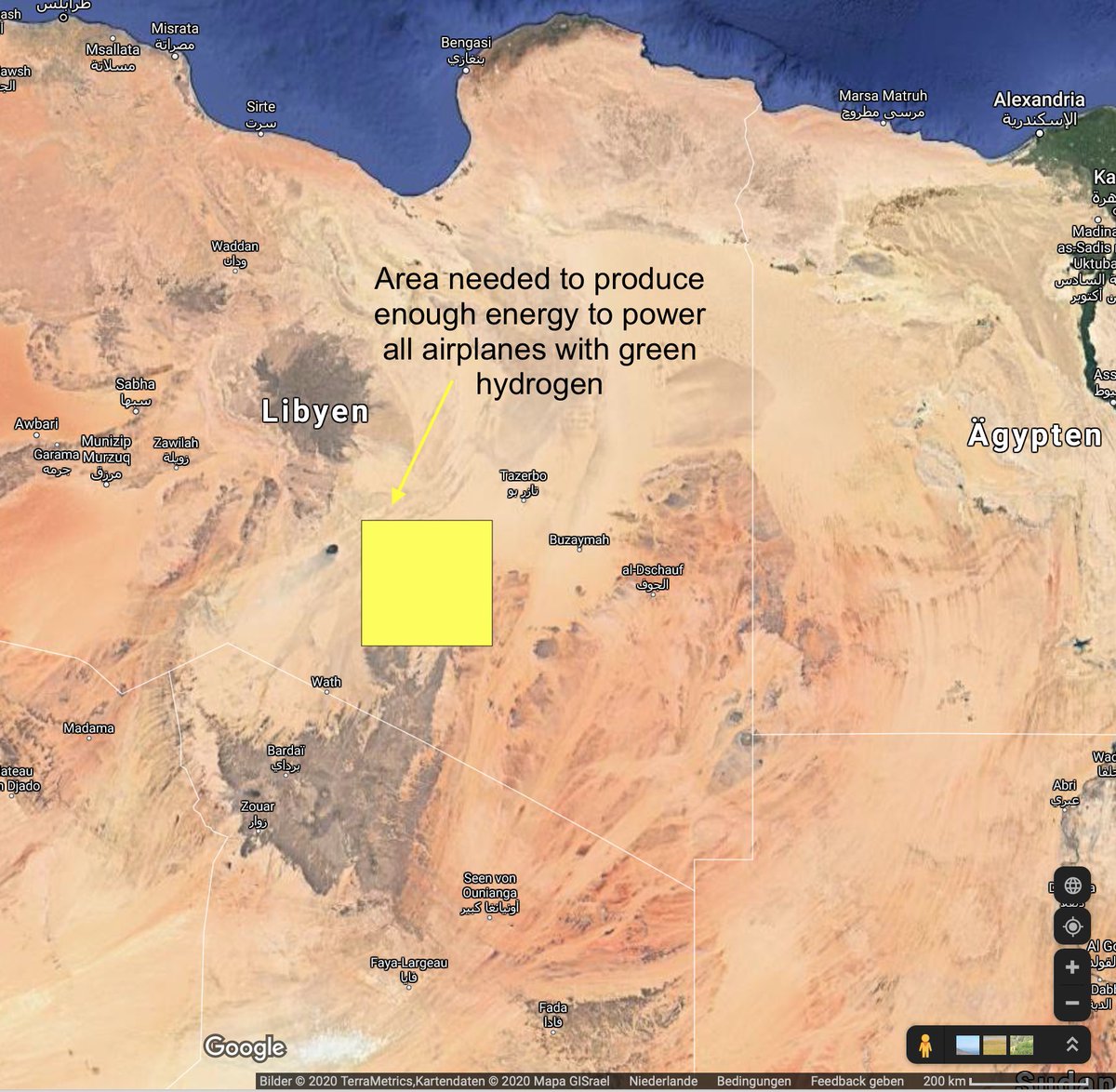. @Airbus is going to announce big "zero emission plans" tomorrow ( https://www.airbus.com/innovation/coming-soon-web-live-zero-emissions-day.html):">https://www.airbus.com/innovatio... #airplanes powered by #green #hydrogen. Can it work? 1/
Let& #39;s do a little calculation: Fuel consumption of commercial airlines worldwide was 96 billion gallons in 2019 (that almost halved in 2020, by the way!): https://www.statista.com/statistics/655057/fuel-consumption-of-airlines-worldwide/">https://www.statista.com/statistic... 2/
Let& #39;s convert this to energy using the "gasoline gallon equivalent" conversion ( https://en.wikipedia.org/wiki/Gasoline_gallon_equivalent),">https://en.wikipedia.org/wiki/Gaso... i.e. there are ~ 35 kWh in a gallon (3.8 litres in the U.S.; 4.5 litres in the UK; oh the joy of dealing with antique units...). 3/
Multiplying the two we get a total (chemical) energy use for commercial aviation in 2019 of 3.36e12 kWh. Could we generate this with, say, #solarenergy ? 4/
The world& #39;s best site for solar energy is Northern Africa where ~ 2300 kWh/m^2 is irradiated per year ( https://globalsolaratlas.info/map?s=25.165173,18.632813&m=site).">https://globalsolaratlas.info/map... The world& #39;s best conversion efficiency from solar energy to fuel is currently 4.2% ( https://phys.org/news/2020-08-solar-energy-hydrogen-fuel-photosynthesis.html)">https://phys.org/news/2020... 5/
Let& #39;s round it up to 5% and assume we can use 50% of the area of a solar power plant for the actual cells (might be conservative). 6/
To generate 3.36e12 kWh, we would then need an area that is 240 x 240 km^2 large. It might look like this on Google maps... (perhaps a sustainable business model for the Maghreb countries?) 7/
*If* so many solar cells can actually be produced and the solar -> jet fuel (H_2) production can be scaled up so massively, one still needs to transport it (probably not that difficult with pipelines? But they need to be built). 8/
All in all this does not sound completely impossible to me in principle, but the question is: can we implement all this infrastructure quickly (and without adding too many emissions from the construction process!) to reach 0 emissions within the next 10 years or so? 9/
Given that even the construction of a single major airport (in Germany at least) takes more than 10 years these days, I very much doubt that this will happen fast enough to make flying actually green within the time we have left to solve the #ClimateCrisis 10/
In the meantime, the only solution seems to be to practice @flyingless 11/11

 Read on Twitter
Read on Twitter


